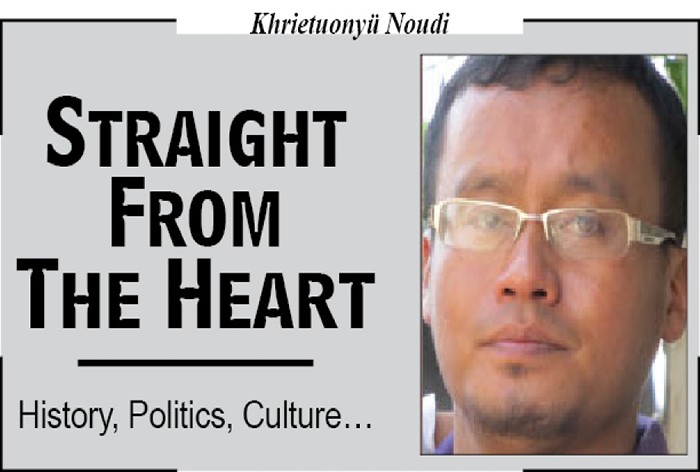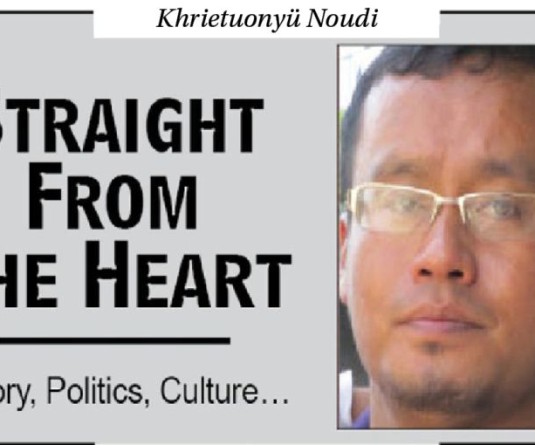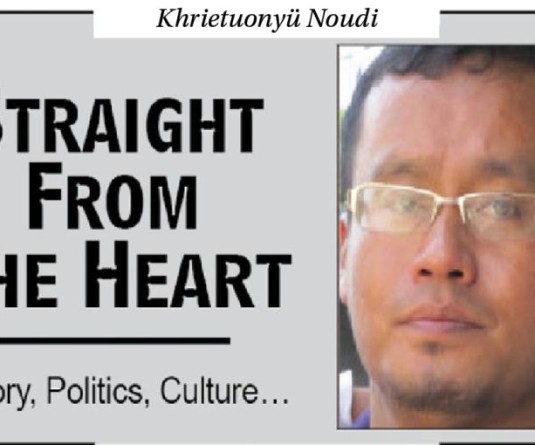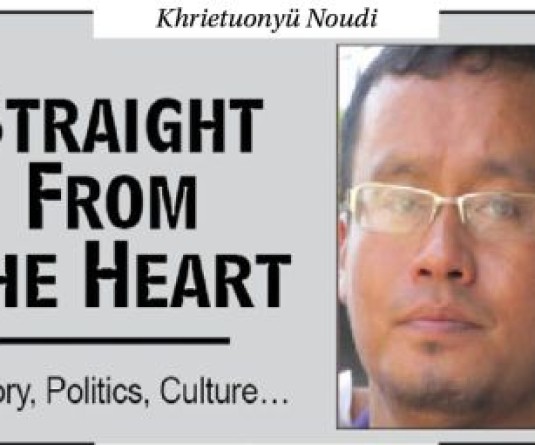
Khrietuonyü Noudi
Every year around the months of April and May, my thoughts naturally gravitate towards a certain spot situated adjacent to the Nagaland Civil Secretariat. This is because a man who was born on 16th May 1904 and died on 30th April 1990 lays buried there. The hill is called Phizo Hill and it should have been the most revered site for all true Nagas. But it remains uncelebrated and even less visited except for those two occasions in the months of April and May where a few individuals set foot here to pay their respects and acknowledge the contributions of the man.
Is it an irony, a coincidence, a purposeful act or a divine arrangement that the graveyard of A.Z. Phizo is situated adjacent in the closest possible proximity to the seat of power in Nagaland, the Nagaland Civil Secretariat? Phizo did not own the plot of land where he lays buried today. Then how come this most prominent spot was allotted to house his mortal remains?
When Phizo died in London on 30th April 1990, his body was brought and displayed for the Naga people to walk pass his open casket and pay their last respects. After that, it was decided to bury him at the spot called Phizo Hill today. And nobody objected to him being buried here even though he did not own the land. Neither the Nagaland state government nor the ancestral landowners objected. Similarly nobody said that it would be too inappropriate to bury Phizo, a symbol of the Nagas’ fight for political self-determination, in a plot of land which is just at a stone-throw away from the Indian funded seat of power in Nagaland.
I guess nobody complained because every Naga knew and acknowledged the contributions of this man in the Nagas’ fight for political self-determination though many do not wish to admit it with their lips. Though Phizo did not contest any elections here in Nagaland, though Phizo was not even physically present in Naga soil for the last 34 years of his life, though Phizo was not a rich man who could fund a movement, though Phizo was never a proprietor of any successful business, though Phizo did not roam around in the latest SUVs guarded by long convoys of vehicles, though Phizo was never invited as the chief guest, chief host or guest of honor at any event in Nagaland, though none of the mega-infrastructures across the length and breadth of Nagaland bears the name of Phizo, yet Phizo is recognized by one and all Nagas as the most inspirational figure of his generation as far as the Naga political movement is concerned.
All the major decisions, laws and decrees concerning Nagaland are framed, implemented and enforced by our ministers, legislators and top bureaucrats sitting in their state of the art executive rooms in the Nagaland Civil Secretariat. The people who walk the corridors of power in the Nagaland Civil Secretariat run the affairs of the whole state and they in a way hold the fate, future and destiny of the Naga people in their hands. And I wonder whether sometimes they bother to look out beyond their windows and see the magnificent graveyard adorning the neighborhood and ponder whether their comfortable lives and the privileges they enjoy have any connection to it. If they do not do that, I think something is amiss.
Today the Nagas may be a small people (hardly 2 millions) and our state may also be one of the smallest in the Indian union (only around 16579sq.km). But the fact that we are a full-fledged state puts us at par or on equal footing with the biggest and most populous states of India. Yes, we are not a mini-state or half-state of India but a full-fledged one. And we became a full-fledged state over six decades ago. And we were given this status not because we deserved it in terms of our population-size or advanced standard of living but because our struggle for political freedom and sovereignty was so intense that it was putting India on the back-foot. So, to placate the Nagas and to save its image before the outside world, the Indian government did the unthinkable i.e., grant full-fledged statehood to the Nagas. In other words, if there had been no Naga political movement, there would have been no Naga statehood. It’s as simple as that. And if you ask who mobilized and spearheaded the Naga national movement, it was none other than the man who today lies buried in the hill next to the magnificent Nagaland Civil Secretariat.
So the people who are enjoying the fruits, benefits and privileges of our statehood status should acknowledge the contributions and sacrifices of those people who spearheaded our freedom movement though statehood status was not what they fought for. So, in a way, it is quite befitting that the so-called Phizo hill is situated right next to our seat of power (the Nagaland Civil Secretariat) because they share the same history and one is the direct outcome or product of the other.
Some of the favorite tourist spots in Kohima are sites like the Kohima war cemetery, the Kohima cathedral and the state museum. Outsiders who visit our city often make a beeline to these places to get a taste of Naga history, culture and diversity. And there is nothing wrong about this. But if we take a look at the story behind these sites, we will find that all these have foreign elements attached to it. For instance, the Kohima War Cemetery is funded and maintained by foreign agencies. The Kohima Cathedral also exhibits foreign elements all over. And the Kohima State Museum is established, funded and maintained by the state government.
But unlike the other tourist attractions of Kohima, the Phizo graveyard or the Phizo Hill at the New Secretariat area has no foreign elements attached to it. It was solely built by the Nagas from their freewill contributions as a memorial to the great man and as a testimony for the future generations. When news of Phizo’s death reached the Nagas in 1990, a funeral organizing committee was formed and Nagas freely and willingly contributed both in cash and kind towards the task of bringing the leader’s mortal remains back home and laying it to eternal rest. And thus the story behind the so-called Phizo Hill has no foreign or Indian strings attached to it and it is all about Naga sweat, Naga hands, Naga idea, Naga struggle, Naga sovereignty, Naga freedom and Naga future. And that is why I don’t mind calling the Phizo Hill a Heritage Site. But unfortunately, I have to add the words “seldom celebrated” because most of us do not accord the due respect and reverence to this site.
When God spoke to Moses in a burning bush, He commanded Moses to take off his sandals because the ground upon which he was standing was holy ground. Likewise, for all true Nagas, the Phizo Hill should be a spot nothing short of Holy Ground because this site embodies all that the Nagas had stood, fought and sacrificed so much for. And the site still remains undefiled and uncorrupted by all the lies, deceit and propagandas that have invaded our land. It still gives out the clarion message that Naga freedom is not for sale because it still remains aloof and detached from the Indian currency that is flowing unabated into our lands. To all those who would set foot on the hill, it has a story of resilience to defiance to convey. In adherence to the Biblical adage, “know the truth and the truth shall set you free”, the Phizo hill at Kohima has the potential to set anyone free of any doubt, confusion or uncertainty about the history and polity of the Nagas and open their eyes to the unadulterated truth of the Naga story.
Yes, the Phizo Hill might not have been built with special stones brought from faraway places or by cranes and modern technology or designed by the most brilliant architects. But the fact that the graveyard was constructed with the locally available resources and by Naga hands makes it all the more meaningful, significant and appealing. Today the Phizo Hill stands next to the seat of power in Kohima. More dynamic and impressive structures may come up in the years to come but it should be our hope and prayer that this iconic symbol of Naga spirit will stand the test of times and continue to do its job of telling the true Naga story. It should also inspire the upcoming generation by telling the story of a man who dared to stand against an empire and became a beacon of hope and defiance for his people. It should also continue to convey the unequivocal message of “ura uvie” – our land is ours.






